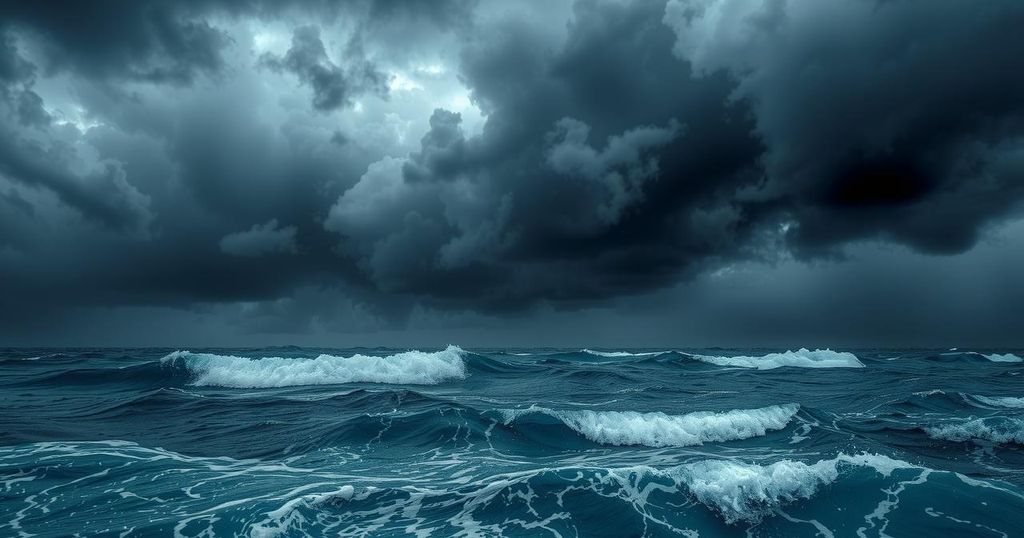Forecasters Warn of Impending Loss of Key Weather Satellites Ahead of Hurricane Season
- Forecasters express concerns over loss of satellite data.
- The DMSP satellites play a pivotal role in hurricane tracking.
- Satellites provide vital information about storm location and intensity.
- Hurricane season predictions signal an above-average risk.
- Meteorologists depend on various data sources amid satellite loss.
Imminent Loss of Crucial Satellite Data Looms
As the Atlantic hurricane season gears up, forecasters express significant concern over the imminent loss of data from three key satellites. Located approximately 600 miles from the west coast of Africa, these satellites have been essential in detecting early signs of tropical storms and hurricanes. Each year, during this season, meteorologists at the National Hurricane Center typically rely on satellite technology to gather critical information about storm locations, structural changes, and intensity levels, but the upcoming data termination creates uncertainty.
Historical Significance of DMSP Satellites
The announcement by the Trump administration in June 2025 signaled a dramatic shift. It stated that the Defense Meteorological Satellite Program (DMSP) and the Navy’s Fleet Numerical Meteorology and Oceanography Center would stop data collection by June 30. This decision was later postponed following requests from NASA officials, however, the reality remains that these satellites play a crucial role in hurricane forecasting. Without this data, assessing storm strength and predicting storm paths effectively is increasingly difficult, putting lives and properties on land at greater risk. The DMSP satellites, operational for over 15 years, were designed for a five-year lifespan, thus this nearly two-decade run exceeded expectations.
Understanding the DMSP’s Unique Contributions
Examining the advantages provided by the DMSP satellites reveals their critical function. Equipped with special sensor microwave imager/sounder instruments (SSMIS), they allow forecasters to look deeper into hurricane structures, similar to how an MRI reveals inner workings of the human body. This capacity for fine detail enables meteorologists to better predict a storm’s center and potential for intensification, which accurately informs preparedness measures, such as evacuations and warnings. Gradually, the utility of visible and infrared satellite data inevitably diminishes when it comes to tracking hurricanes, leaving forecasters concerned about their capabilities during the peak of the hurricane season.
Concerns Grow as Government Programs Face Funding Cuts
As meteorologists brace for what is expected to be an active hurricane season, forecasts predict six to ten hurricanes. This season typically peaks in intensity between mid-August and mid-October, which unfortunately coincides with the scheduled data shutdown of the DMSP systems. While alternative satellites like NOAA-20, NOAA-21, and Suomi NPP can provide some level of data, their tools deliver less clarity compared to DMSP satellites. Furthermore, newly introduced satellites such as ML-1A may not offer accessible data for meteorologists at the National Hurricane Center, further complicating forecasting efforts. Faced with budgetary constraints and historical delays in satellite development, these challenges grow exponentially. The loss of reliable satellite data dramatically impacts the safety of individuals who are affected by these weather events.
The Urgent Need for Reliable Satellite Data
In conclusion, the looming data loss of DMSP satellites raises serious alarms among meteorologists. These key satellites have provided crucial data that improve forecasting accuracy and ultimately save lives. As the current hurricane season approaches, the dependence on fewer and less effective datasets draws serious concerns about preparedness and public safety, underlining a crucial need for reliable satellite technology in an era of increasingly severe weather events. The hope remains that the federal government will recognize the importance of these satellites and prioritize their replacement to fortify hurricane preparedness efforts.
The loss of key satellites crucial for hurricane forecasting is concerning, with potential risks to lives and property. While alternative data sources exist, they may not match the effectiveness of DMSP satellites. The government must prioritize satellite technology to enhance hurricane preparedness during increasingly severe weather conditions.




Post Comment